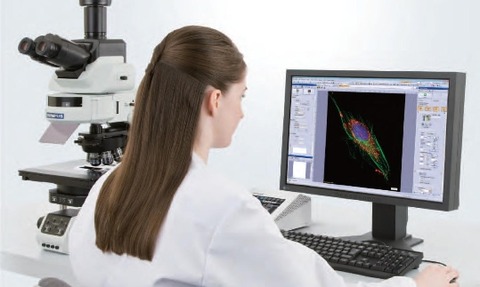
Olympus claims its cellSens software allows users to generate expert results regardless of experience level.
Features include:
- The ‘Well Navigator’ Solution
- High Dynamic Range (HDR) imaging
- 2D deconvolution for maximising image clarity
- A new database model
The software now supports additional models of high-sensitivity cameras and is compatible with the Olympus Real Time Controller (RTC), which is especially powerful when performing high-end methodologies such as Total Internal Reflection Fluorescence (TIRF).
The system can meet the needs of all users with customisable pre-sets for a wide range of plate formats and panoramic imaging of each well.
As focusing is an issue when moving across large multi-well plates the new Well Navigator Solution works seamlessly with the Olympus ZDC focus compensation unit, which can automatically maintain perfect focus without any need for user intervention.
When studying fast dynamic processes a high level of acquisition accuracy is a must for reliable quantitative analysis.
For these situations cellSens 1.7 supports a dedicated real-time processor that facilitates advanced imaging via microsecond synchronisation of the camera, light source and filter units.
The new cellSens 1.7 database has also been redesigned to provide centralised data storage management, optimised for multi-user access. Large groups, or even different institutions, can effortlessly collaborate by securely sharing research data, while maintaining quick and easy access through customizable databases.
There are also a number of user interface enhancements in cellSens 1.7, including the ability to use existing images to set the microscope system to the same acquisition settings, ensuring consistent analysis across many different samples.
Furthermore, the new ‘Dark Skin mode’ reduces monitor brightness when performing fluorescent imaging, while maintaining clear coloured icons for intuitive ease-of-use.




